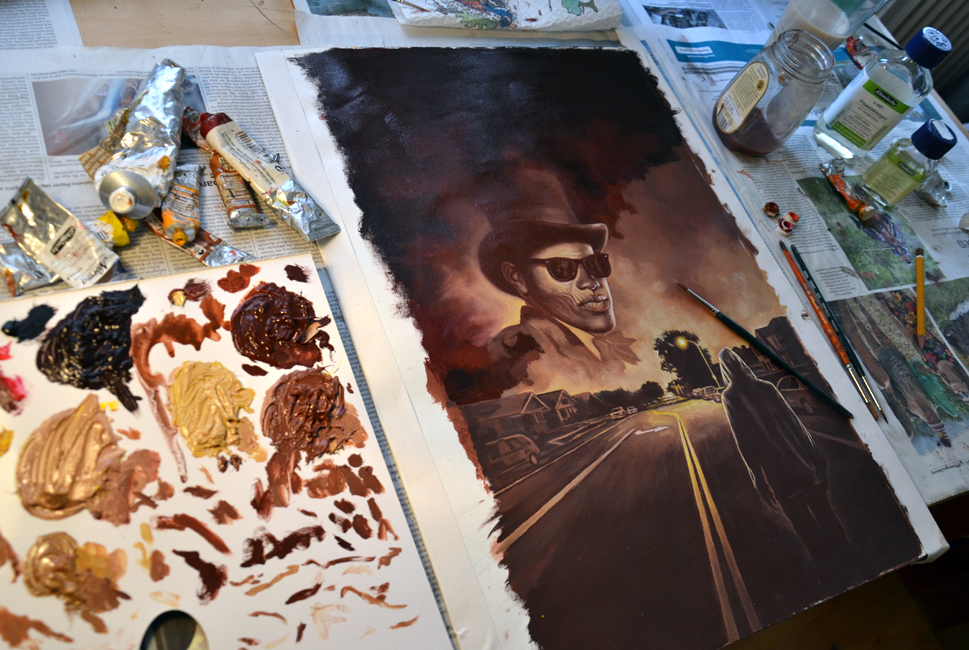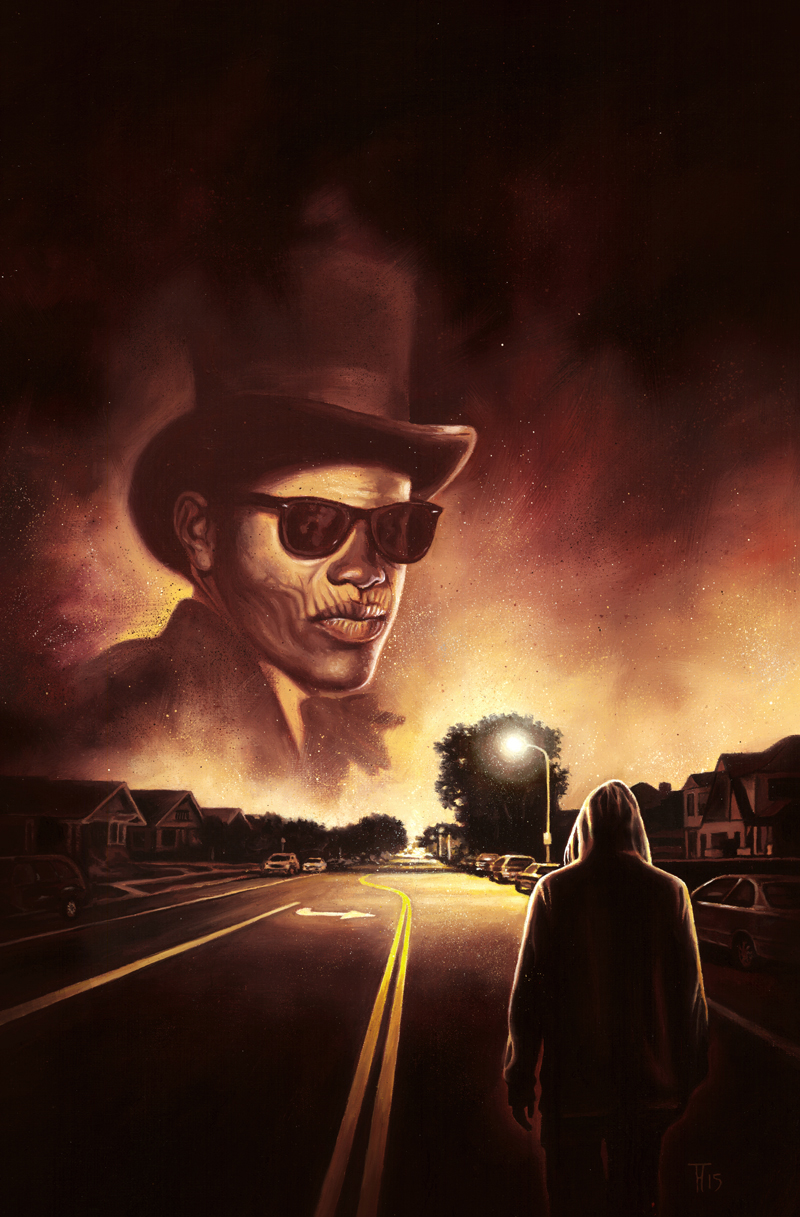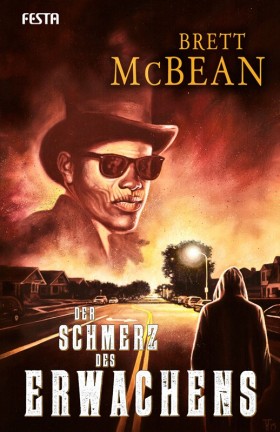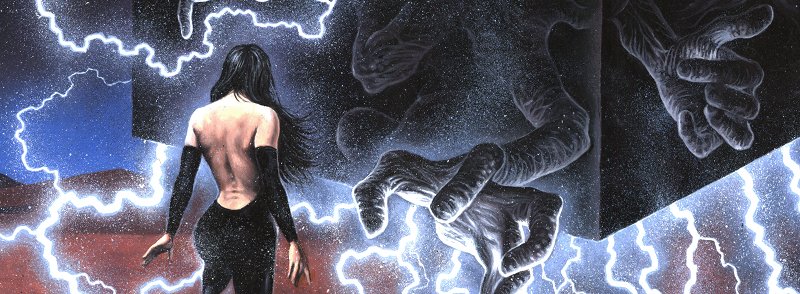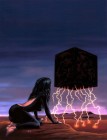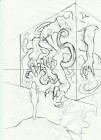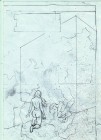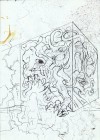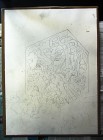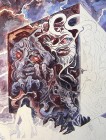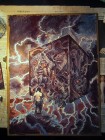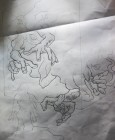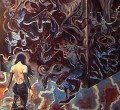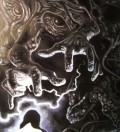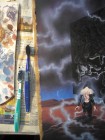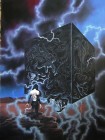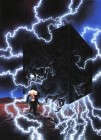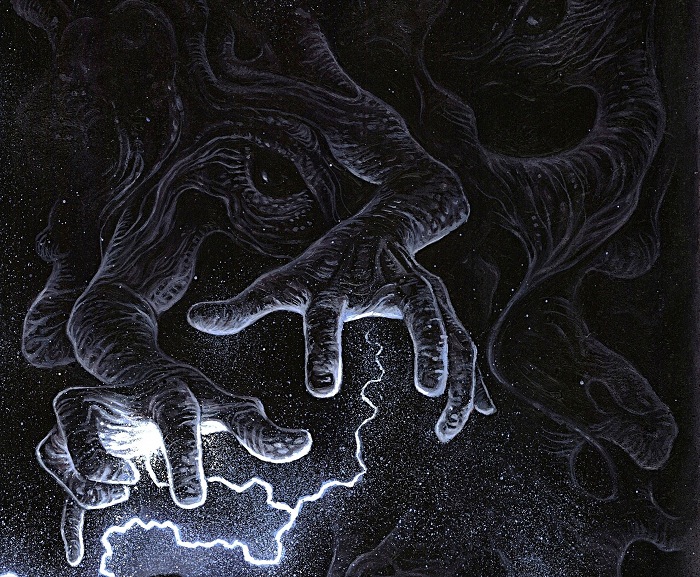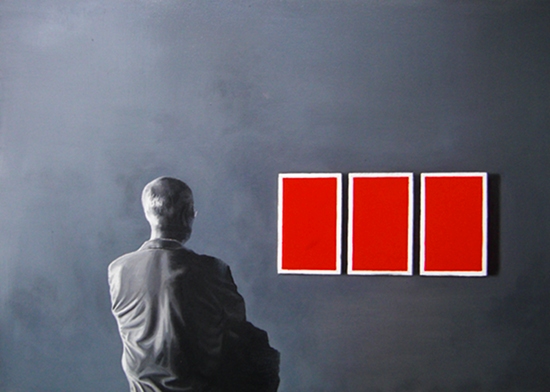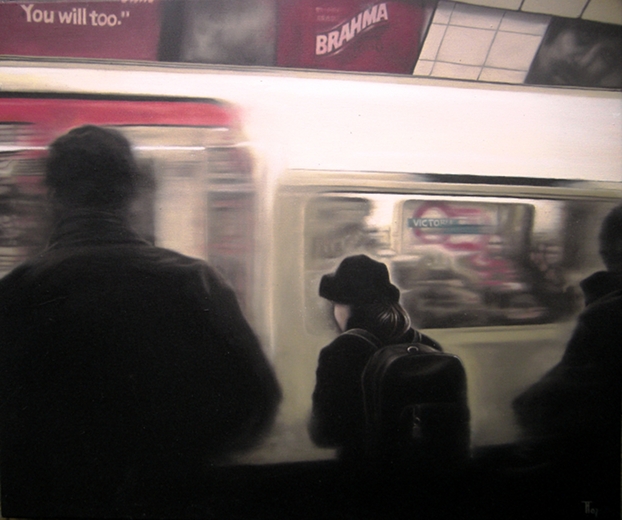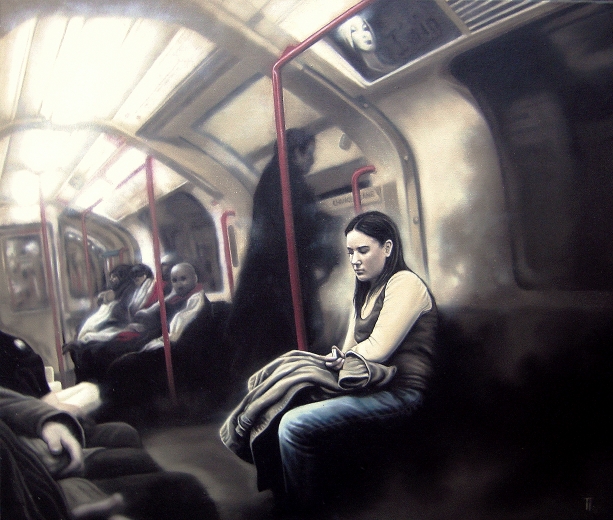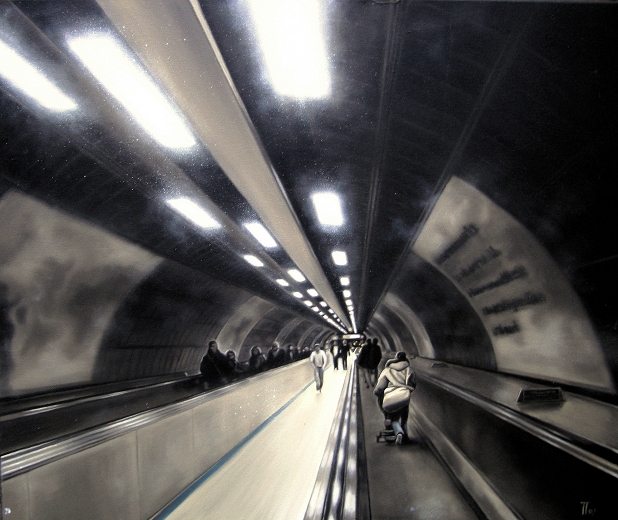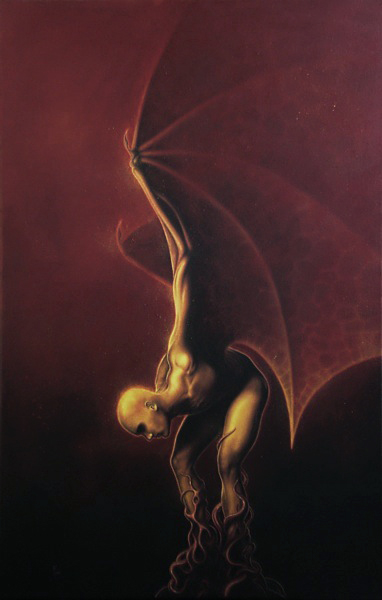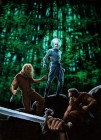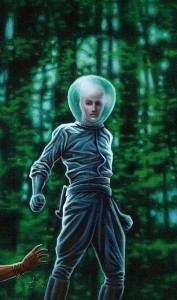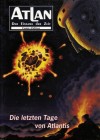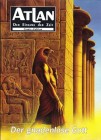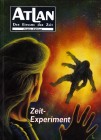Cover Illustration for Der Schmerz des Erwachens (The Awakening) by Brett McBean, Festa, 2015
- Skizze
- Erste Farbschicht
- Zweite Farbschicht
German Edition of the Novel The Awakening by Brett McBean ; to be published in a limited edition in 2015 by Festa.
From the publisher’s preview:
“Für Toby ist es der letzte Sommer vor der High School. Die Gedanken des 14-Jährigen kreisen um die unerreichbaren Mayfour-Schwestern, nächtliche Horrorfilm-Marathons und darum, Dwayne und seiner Gang nicht in die Quere zu kommen.
Und dann ist da noch Mr. Joseph. Der entstellte, alte Mann lebt zurückgezogen in dem schäbigen Haus gegenüber, beißt Hühnern den Kopf ab, starrt den Kindern nach und wird häufig das Opfer gemeiner Streiche.
Eines Nachts wird Toby Zeuge eines solchen Streichs und muss erkennen, dass Monster existieren – nur nicht unbedingt dort, wo wir sie erwarten …
Brett McBean erzählt eine packende, düstere Geschichte über einen unvergesslichen Sommer und eine ungewöhnliche Freundschaft – und über eine fremde Welt voller Tod, Schmerz, Voodoo-Geister, Sklaven, böse Hexer … und Zombies!”
The painting shows Ghede Nibo (or as in the book: Guédé Nimbo), an intermediary between the living and the dead in Haitian Vodou.
Vampira Vol. 13, Traumzeit-Dämonen (Dreamtime Demons) – The Making of a Pulp Cover Illustration
“In diesem Augenblick materialisierte vor ihr etwas, das die Unwirklichkeit verdichtete: Ein gewaltiger über dem roten Sand schwebender Quader, der aussah wie ein Klotz aus tonnenschwerer Dunkelheit! Die ganze Schwärze des Universums schien an diesem einen Punkt zusammengeballt zu sein, in einen Würfel gepresst, dessen Kanten und Konturen geschliffen scharf wirkten.
Lilith stockte der Atem Alle ihre Sinne konzentrierten sich auf diesen Block aus Finsternis, aus dessen Unterteil plötzlich gezackte Blitze in den Wüstenboden stießen und Sandfontänen aufwarfen. Lilith wurde von ein paar der “elektrisch” aufgeladenen Körnern getroffen. Sie prasselten gegen die Hülle des Symbionten, der die Form eines rückenfreien, vorn aber bis zum Hals geschlossenen Catsuits angenommen hatte. (…)
Die äscherne Aura hüllte Lilith erneut ein. Eng anliegend wie eine dritte Haut, wenn man den Symbionten als zweite einstufte. (…) Zentimeter trennten Lilith noch von dem schwebenden Koloss, in dem sich – sie sah es jetzt deutlich – schreckliche, schemenhafte Gestalten tummelten.(…) Und wieder machte sie einen Schritt, den sie gar nicht wollte. Berührte noch nicht selbst, aber mit der äschernen Aura das Domizil der entarteten Wondjinas! (…)
Vor Lilith schnellte etwas aus dem dunklen Vorhang. Etwas, das wie ein narbiger, furunkelübersähter, eiternder Arm aussah, aber keiner sein konnte. Es war nur der Abdruck eines Dings, das dort, woher es auf Lilith zustieß, keine Form besaß. (…) Immer mehr Arme und andere, menschlichen Extremitäten nachempfundene Extremitäten stießen aus em nachtschwarzen Quader.”
From: Adrian Doyle (Manfred Weinland), Traumzeit-Dämonen (Dreamtime Demons) und Apokalypse (Apocalypse), Vampira Bd. 13 und 14, © Bastei
The original cover illustration for volume 13 of the horror pulp series Vampira from 1995 was based on a brief description by the editor: Australian outback, in the foreground the series’ protagonist, dressed in a black, back free catsuit, in the backgound a huge, black, hovering cube, sending flashes of lightning to the red desert below; in its inside shadowy demons.
What I had in my mind when I created the painting back then was a little bit of a mixture between Caspar David Friedrich, Edgar Ende and Kubricks 2001 (the black monoliths), a rather unspectacular, calm scene. The deep blackness of the cube was more important to me than the demons, and because of that I only hinted at them with a few brushstrokes.
I do like some things about the painting, but in general it did not turn out as I imagined, and the figure in the foreground has its weaknesses, too (a really big head, for example). The cube was digitally lightened for print, with the result that neither the monolith was black as it should have been, nor the demons became more recognisable (simply because i did not really paint them).
The new edition of the series in 2011 provided the opportunity to paint the same scene again with quite a different approach – less like a Caspar David Friedrich painting and more dramatic, the flashes of lightning more vivid, the cube much closer to the foreground and really black, but without making the demons disappear in this blackness.
- Erste Skizze
- Vorzeichnung
- Vorzeichnung
- Vorzeichnung, auf Malkarton übertragen
The pencil drawings are DIN A4; the finished drawing was enlarged and transfered to painting cardboard (40 x 55 cm). For the first, rather sketchy colour layer I always use acrylyc, basically to try different colours and to define light and shadow.
- Beginn der Acrylfarben-Untermalung
- Acrylfarben-Untermalung, zur Hälfte fertig
- Arcylfarben-Untermalung, fertig
After I had finished the acrylic layer, I did not like the demons’ claws anymore and changed them to more human looking hands, using my own hands as a reference.
- Referenzfoto für Hand
- Vorzeichnung für Hände
- Neue Zeichnung der Hände auf Malgrund übertragen
- Neue Acryl-Untermalung der Hände
On top of the acrylic paint came two complete layers of oil paint plus additional details. For the “ashlike aura”, as it is described in the novel, and the sparks of light I used toothbrushes. The last step was to paint the whites cores of the lightning flashes.
- Erste Ölfarbenschicht, zu einem Drittel fertig
- Erste Ölfarbenschicht, Detail
- Erste Ölfarbenschicht, fertig
- Zahnbürsten zum Sprenkeln
- Zweite Ölfarbenschicht, Hintergrund fertig
- Blitze
- Fertiges Bild
The pulp novel was published on october 18.
Cover Illustrations for a New Edition of the Pulp Series Vampira, 1994/1995/2011
- Bd. 3
- Bd. 7
- Bd. 13
On may 3, 2011, Bastei started the the relaunched edition of the bi-weekly horror pulp series Vampira. Volume 3 and 7 display reprints of two of my cover images from 1994 and 1995. A brand new cover illustration will follow in october. More about Vampira and more images in the article about the original series from the 90s.
Covers: © Bastei Lübbe
Red Alert, 2009
Oil on canvas, 60 x 50 cm. The painting is a hommage to Red Alert by Hito Steyerl, one of my favorite pieces shown at documenta 12 in 2008.
London Underground, 2007
Öl auf Leinwand, jeweils 60 x 50 cm. Die Gemälde basieren auf Fotos, die ich 2006 in London gemacht habe.
Oil on canvas, 60 x 50 cm each. The paintings are based on photos I took in 2006.
Cover Illustrations for the Pulp Series Maddrax, 2000
Maddrax is a German pulp series published biweekly by Bastei since 2000. The series is a genre mixture of science-fiction, horror and fantasy and evolves around the former United Air Force pilot Matthew Drax who has been transported some 500 years into a post-apocalyptic future.
In addition to the black-and-white title page, used till vol. 100, I contributed two cover illustrations, according to the editor’s descriptions.
The authors of these two novels are Jo Zybell (vol. 10) and Bernd Frenz (vol. 22).
More on Maddrax in the Maddrax Wiki or in a current Deutschlandfunk post.
Covers: © Bastei Lübbe
Cover illustrations for Atlan comic books, 1995/96
Atlan is one of the main characters in the science fiction pulp series Perry Rhodan and the title hero of the Atlan series, which has been published intermittently and in various form since 1969. These three hardcover albums, reprints of three volumes of the comic series Perry – Unser Mann im All were published by Hans Joachim Bernt Verlag in a limited edition of 800 copies in 1996/97. The paintings (the only case in which a publisher bought not only the publishing rights, but also the original artwork) may show that I am more familiar with ancient Egyptian gods than with spaceships …
Cover: © HJB Verlag




